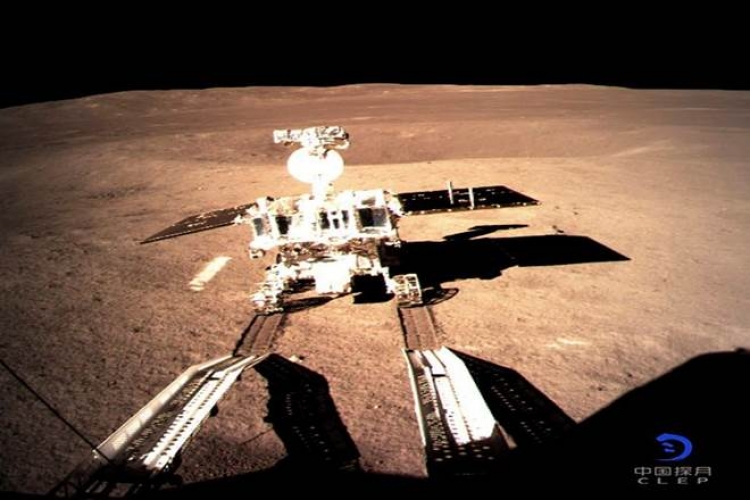First-ever soft landing – Close-up images Dark Side of the Moon
In news
China’s Chang’e-4 lunar rover made the first-ever soft landing on the far side of the moon and sent back close-up images of the previously unexplored region, a giant leap for cosmic exploration and a major boost to the Communist nation’s quest to become a space superpower.
The lunar explorer landed on the far side of the moon and has already sent back its first pictures from the surface.
Chang e 4
Chang'e 4 is a Chinese lunar exploration mission that achieved the first soft-landing on the far side of the Moon. The mission is the follow-up to Chang'e 3, the first Chinese landing on the Moon. The spacecraft was originally built as a backup for Chang'e 3 and became available after Chang'e 3 landed successfully in 2013.
The Moon is tidally locked to Earth, rotating at the same rate that it orbits our planet, so the far side is never visible from Earth. The probe, the Chang’e-4, is expected to make the first-ever soft landing on the far side of the Moon. Previous spacecraft have seen the far side of the Moon, but none has landed on it.
The far side of the moon known as ‘South Pole-Aitken Basin’ still remains a mystery among space scientists and by sending a probe there, China will outdo the historical achievements of the US and USSR.
Its mission
The tasks of the Chang’e-4 probe include low-frequency radio astronomical observation, surveying the terrain and landforms, detecting the mineral composition, and measuring the neutron radiation and neutral atoms to study the environment on the far side of the moon.
Significance
- According to experts, landing on the far side of the moon is undoubtedly one of the most challenging missions ever launched by any of the world’s superpowers.
- Considering that earth is right next door to the moon, we know precious little about it. Its formation and early evolution present mysteries which, if understood, could guide us in planetary studies, and help in understanding exoplanets.
- The near side, which faces earth, has dark patterns; the far side, turned away, is marked with circular spots that are craters formed by meteorite collisions. The moon’s near side is believed to have a thinner shell, so that when meteorites bombarded it they cracked its shell, releasing lava which gushed out and covered traces of the impact and left dark patches.Being thicker, the far side did not face such an erasure and bears the marks of the crater impacts. This mission could verify these theories and discover the reason behind these dichotomies.
- The moon’s far side also differs from the near side in that it is shielded from all the radio waves emanating from earth. Communication devices and satellites have made it too noisy for radio astronomers to easily and accurately interpret signals. The near side of the moon also suffers from this problem of noise. On the other hand, the far side is a quiet place and a haven for earthly aspirations to set up a radio telescope that could reveal astronomical mysteries, such as the structure of the universe shortly after the Big Bang.
- China has now joined the U.S. and the former USSR as the only countries to have made a “soft landing” on the moon. But beyond underlining China’s technological advances, Chang’e-4 could herald a new chapter in lunar exploration.
- Communication difficulties will be the main problem faced by the Chinese team as they try to land on the other side of the moon. China is expected to consider using options like radio telescopes to comumunicate in the absence of a transmitting medium.
History of China’s lunar exploration programmes:
China began their lunar exploration program in 2007 by launching a simple lunar orbiter named ‘Chang’e 1’. The second mission in the program named ‘Chang’e 2’ was launched in 2010, and it was later followed by the third mission ‘Chang’e 3’. ‘Chang’e 3’ made headlines all around the world as it marked the first soft moon landing since 1976.


 IAS -2025 Prelims Combined Mains Batch - III Starts - 14-04-2024
IAS -2025 Prelims Combined Mains Batch - III Starts - 14-04-2024